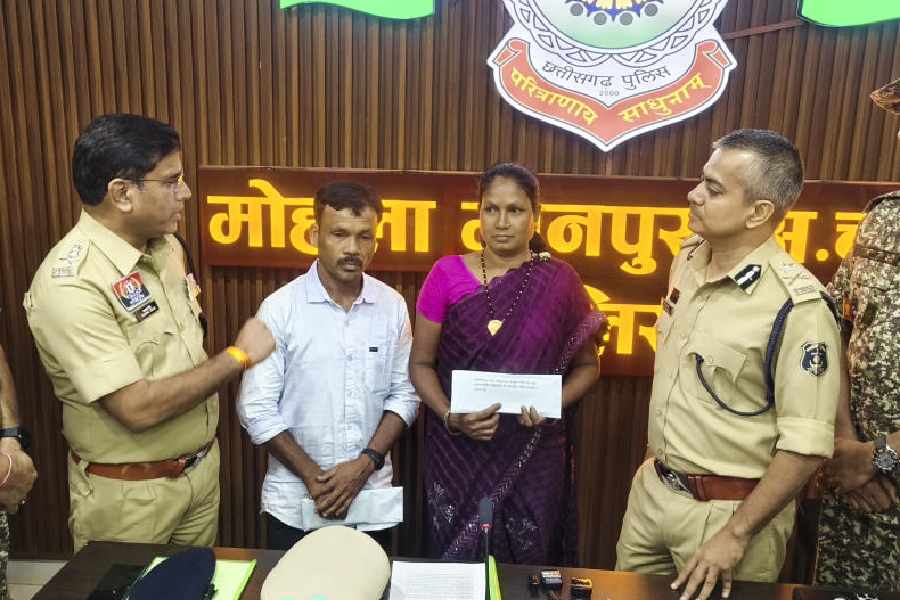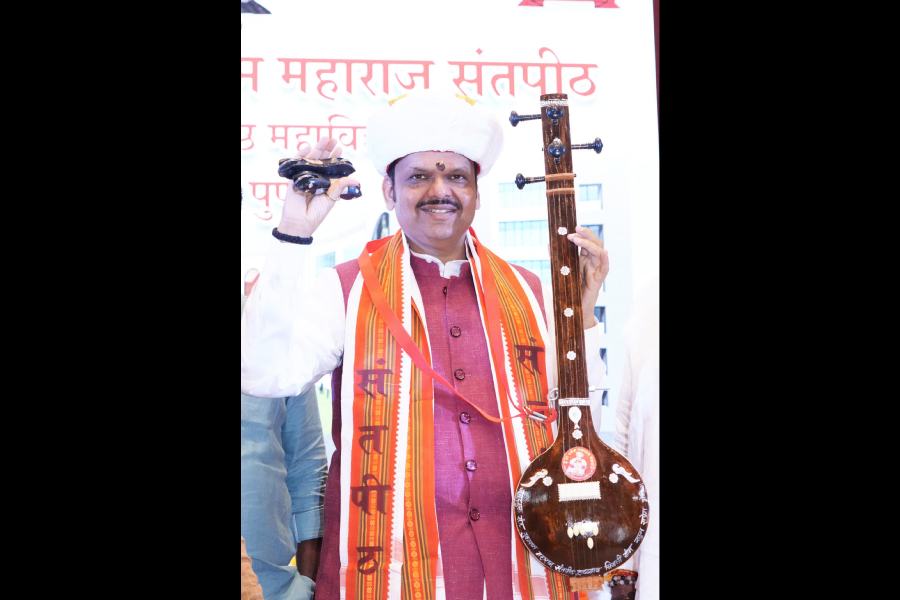 |
| A “Hul Yatra” taken out by social organisations to mark 150th years of Santhal Hul in Ranchi. Picture by Ashok Karan |
Delaya birid pe,
delaya tigun pe:
Arise and Awake, lay the foundation of the Santhal Raj. This was the central motive behind the historic Santhal Hul, as observed by Dhirendranath Baskey, the well-known author of Saontal Ganasangramer Itihas.
Baskey extended the tradition of historicising the Santhal rebellion set by Dr K.K. Datta, the great historian of Jharkhand, in 1940.
Ever since a historic essay on the subject was published in the Calcutta Review in 1856, the great event has been invoked not only in such inside accounts as Horkoren Mare Hapramko, Reak Katha, Chotrae Deshmanjhi Raek Katha but also in accounts by R. Cartair, W.W. Hunter, J.M. Macphail, E.G. Man etc.
The Calcutta Review observed that this uprising had no parallel in English history.
It is indubitable that in militancy and honesty of purpose it had not many parallels in Indian history also. Santhal history was an endless tale of displacement and migration till they were allowed to settle in Damin-i-koh.
This grew to be their cherished homeland containing more than fourteen hundred villages inhabited by about one lakh people. But soon avaricious merchants, moneylenders and indigo planters began to dispossess them of their hearth and home.
Growing pressure of land rents, atrocities of the railway officials and an unresponsive British Raj, added to their sufferings. A Santhal song poignantly related
Nobody listened, nor cared for our sufferings
We were left alone, no one stood by us None gave us shelter, or help.
We will take up arms to protect our ladies and children.
They took the historic decision of resisting the wrong instead of migrating to safer places to register their social protest as done before. Thus militancy was forced on social marginals by the mighty and affluent who seldom allowed them to live a life of peace and dignity. Scholars termed this variously as insurrection, uprising and peasant insurgency.
But the adivasis preferred to call it Hul, waged to assert their territorial sensibility, free from the exploitation of the moneylenders, merchants, landlords and indigo planters whom the British had let loose on them. Enemies thus identified, the famous quartet of Sido, Kanhu, Chand and Bhairab then nursed the pent up grievances.
The indigenous mode of rallying people for community action was enacted by playing on the drums, horns and flutes, by conducting communal hunt and fishing and through the circulation of Sal and jackfruit branches around villages.
And to invoke divine sanction, leaf cups containing tel-sindur moved around Santal villages. The leaders insisted that they were fighting the dikus and sahebs as ordained by their Thakur. This immediately cemented intra-tribe bond. Inter-tribe solidarity particularly with the Bhuiyan and Mal as well as class solidarity with the potters, carpenters, blacksmiths, milkmen, doms, chamars and momins were forged.
Ranks swelled to convert the struggle into a militant insurgency of the social marginals. Responding to the call of Sido and Kanhu, ten thousand Santhals assembled at Bhagnadihi on 30 June 1855 to solemnly resolve to end oppression and found the Sanhtal Raj. They decided to march to Calcutta to lay down their grievances before the Governor General. Plunder and loot were conducted in the houses of the oppressors to collect the essentials and also terrorise others to join their ranks.
On July 7, the hated moneylender Kenaram Bhakat and Maheslal Dutta, the daroga, were killed. These acts struck terror over a large tract of land in Bihar and Bengal as recorded in the Sambad Prabhakar, Sambad Bhaskar and Somprakash. Alarmed by the militancy of the rebels, the British Raj mobilised a large army.
Undaunted by the enemy preparations, the insurgents ransacked Pakur zamindar's house and vanquished the British force at Piyalpur and Katna. The British retaliated by resorting to indiscriminate torching of rebel villages. The bow-arrow-axe-sword-wielding Santhals were no match for the British with superior firearms.
But in sheer bravery and determination, they put their adversaries, as an English Colonel admitted, to utter shame. The British proclamation ordering submission was often spurned.
A harassed Raj imposed the dreaded martial law on 10 November 1855.
This let loose a reign of terror when 14,000 strong British army converted the war into a carnage. When the martial law was withdrawn in January, the rebels resumed their fight. But they could not continue it for long.
In February, 1856 the struggle came to an end with the martyrdom of Sidho and Kanhu. Not the leaders alone but countless rebels laid down their lives to protect their dignity and honour. Even death was put to shame when a Santhal rebel, while ascending the gallows, requested for a bit of tobacco.
Peace returned to the deadened and depleted Santhal hamlets. Santhal dominated areas were constituted into a separate non-regulation district called Santhal Parganas.
But colonialism continued to practice the politics of paternalism to facilitate the process of the Santhals being turned into ?coolies and colliers?.
The woe of the adivasis and others continue even today, making the Hul type determination of fighting the wrong, immortalised in the following song, relevant even today.
Sido why are you bathed in blood?
Kanhu why do you cry Hul, Hul?
For our people we have bathed in blood
For the trader thieves have robbed us of our land.
The writer is a researcher in Tribal History, Chaibasa, asokakumarsen@sify.com










